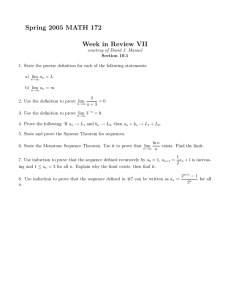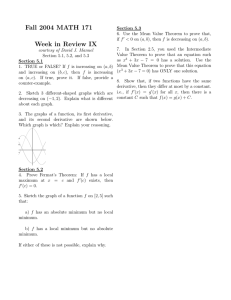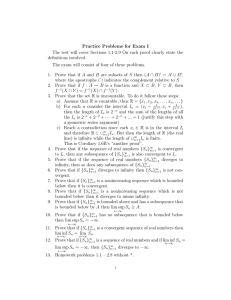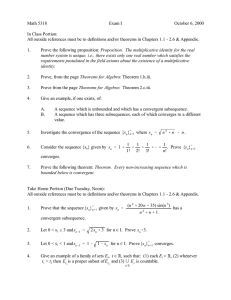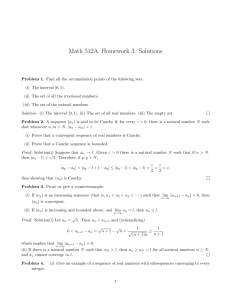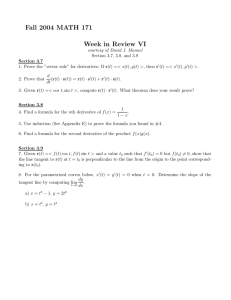Practice Problems for Exam II
advertisement
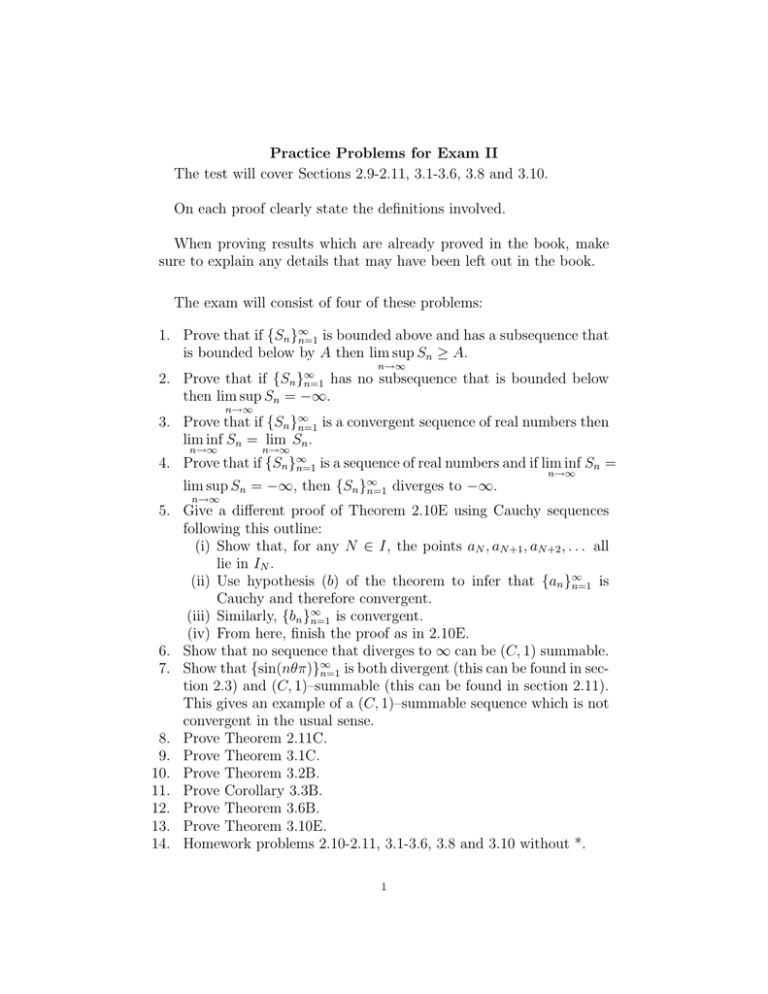
Practice Problems for Exam II
The test will cover Sections 2.9-2.11, 3.1-3.6, 3.8 and 3.10.
On each proof clearly state the definitions involved.
When proving results which are already proved in the book, make
sure to explain any details that may have been left out in the book.
The exam will consist of four of these problems:
1. Prove that if {Sn }∞
n=1 is bounded above and has a subsequence that
is bounded below by A then lim sup Sn ≥ A.
n→∞
2. Prove that if {Sn }∞
n=1 has no subsequence that is bounded below
then lim sup Sn = −∞.
n→∞
3. Prove that if {Sn }∞
n=1 is a convergent sequence of real numbers then
lim inf Sn = lim Sn .
n→∞
n→∞
4. Prove that if {Sn }∞
n=1 is a sequence of real numbers and if lim inf Sn =
lim sup Sn = −∞, then {Sn }∞
n=1 diverges to −∞.
n→∞
n→∞
5. Give a different proof of Theorem 2.10E using Cauchy sequences
following this outline:
(i) Show that, for any N ∈ I, the points aN , aN +1 , aN +2 , . . . all
lie in IN .
(ii) Use hypothesis (b) of the theorem to infer that {an }∞
n=1 is
Cauchy and therefore convergent.
(iii) Similarly, {bn }∞
n=1 is convergent.
(iv) From here, finish the proof as in 2.10E.
6. Show that no sequence that diverges to ∞ can be (C, 1) summable.
7. Show that {sin(nθπ)}∞
n=1 is both divergent (this can be found in section 2.3) and (C, 1)–summable (this can be found in section 2.11).
This gives an example of a (C, 1)–summable sequence which is not
convergent in the usual sense.
8. Prove Theorem 2.11C.
9. Prove Theorem 3.1C.
10. Prove Theorem 3.2B.
11. Prove Corollary 3.3B.
12. Prove Theorem 3.6B.
13. Prove Theorem 3.10E.
14. Homework problems 2.10-2.11, 3.1-3.6, 3.8 and 3.10 without *.
1


